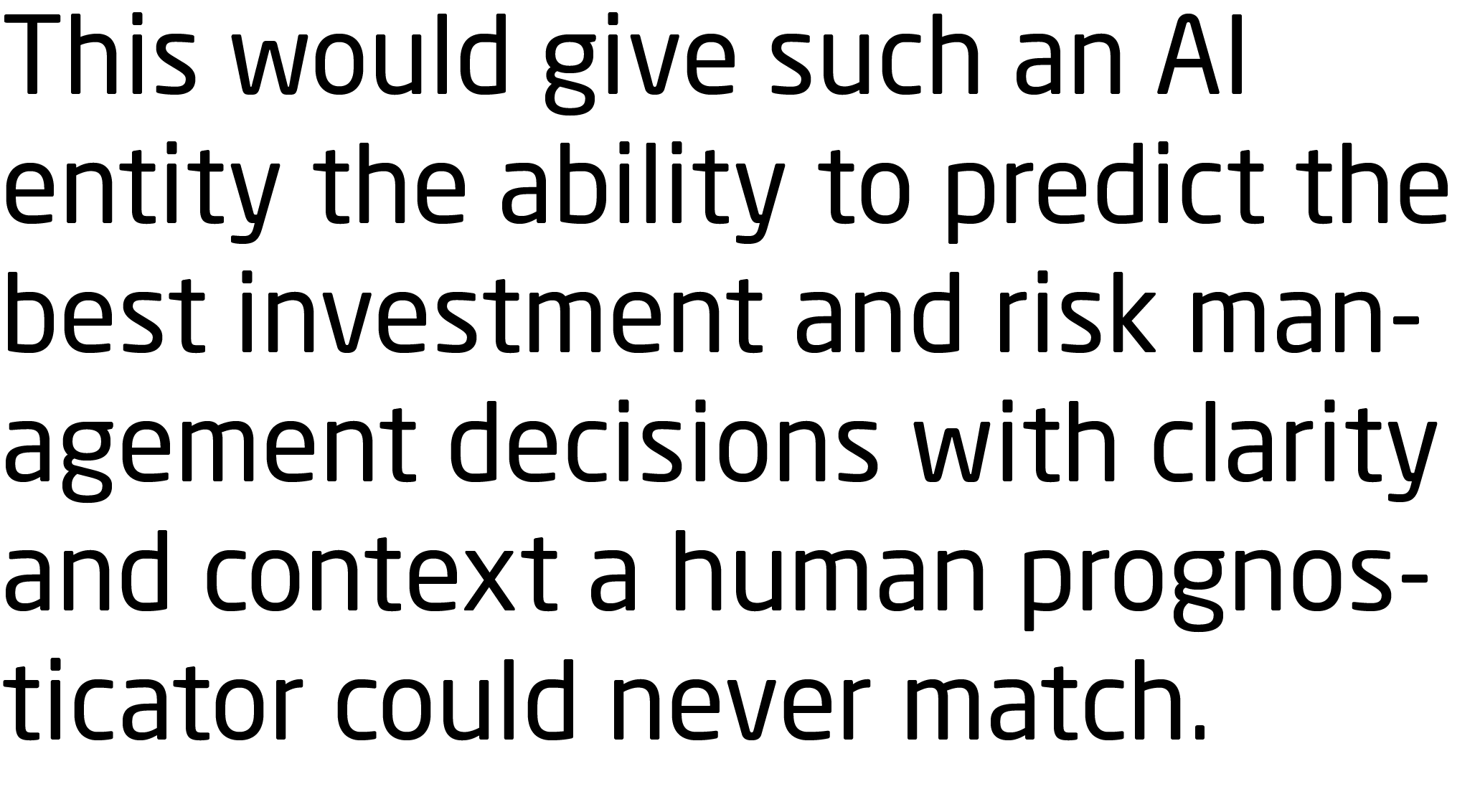The COVID-19 Pandemic of 2020 forced banking customers to handle more transactions and services remotely. Even before this abrupt and massive shift, banks had digitized many tasks already because of the swift expansion and growing sophistication of AI systems.
The phenomena driving innovation in banking automation feed off one another. The demand for remote banking drives technology improvements which, in turn, make remote and otherwise automated banking more attractive to firms and customers, leading to more demand and further improvement.

 
“If banks want to win the fight for their customer relationships, many things will need to happen,” state McKinsey researchers in a working paper discussing banking automation and risk management. “Customers will likely expect intuitive experiences, access to services at any time on any device, customized propositions, and instant decisions. To deliver on the customers’ expectations, banks will probably require redesigning the whole organization from a customer-experience perspective and digitizing at scale.”
Banks like Chase are already implementing this process – starting in 2016, Chase redesigned its branches with “digital lobbies,” according to Bank Automation News. In the new tech-forward design, automated tellers with expanded deposit and withdrawal capacity and various other services now operate in bank lobbies alongside human tellers, who are mostly out-of-sight upon first entry.
Winning the race to automation is imperative for big banking institutions because various digital financial services companies have been chipping away at the banks’ core business for a decade; services like Mint, Acorns and NerdWallet, etc. offer frictionless banking experiences by asking customers for only a piece of their financial business at a time — usually one of the most lucrative pieces.
“Almost 60 percent of banks’ profits come from origination, sales, distribution, and other customer-facing activities,” McKinsey states. “They earn an attractive 22 percent return on equity (ROE) from these, much higher than what they gain from the provision of balance sheet and fulfillment, which generates only a 6 percent ROE.”
That’s why SkillsetGroup IT has seen job orders coming in from banks, financial firms and industrial companies with finance operations scrambling for the talent to stay relevant in an increasingly automated industry.
We have best-in-class technical recruiters working every day to find this rare programming talent, but not all fintech projects are the same.
Experts who study these trends look at the development of banking automation in a series of evolutionary stages.
 
What is Robotic Process Automation in Banking and Accounting?
 

The ATM machine that lets you withdraw and deposit money? Those have been around since the 1980s. They aren’t very smart, even today with super-accurate bill counters and sensors to read checks – a layer of basic AI on top of a legacy system.
Their core function hasn’t changed. The information an ATM gives you is preprogrammed (minus the cash counts and balances it pulls from your account ledger and its onboard sensors), and it can’t respond to general questions or help you in a unique situation. An ATM is an example of “Robotic Process Automation,” the first evolutionary step into an almost fully-automated banking future.
 
What Are Expert Systems in Fintech?
Another more complex step in financial and banking automation and AI is the design of expert systems – online-only mortgage companies started to advertise them for the mass market 20 years ago.
Applying for a mortgage is governed by strict rules, a uniform set of documents, a uniform set of verifications and a common set of steps every mortgage broker must take to handle all the banking activity necessary to secure a mortgage loan.
In most cases, rules – and even their exceptions — are proscribed in black-and-white. The software to automate the customer interactions to secure a mortgage doesn’t even have to be that “smart.” Designing expert systems in banking is more like designing and fine-tuning a precision watch than a thinking machine.
“Expert system software can be developed for any kind of problem that involves a selection from a group of choices especially if the decision is based on logical steps,” state the authors of a 2020 accounting automation study in the International Journal of Research and Innovation in Social Science (IJRISS). “Hence, any area where a person has special expertise is a potential area for creating an expert system.”
Impressive, objectively, but not necessarily disruptive – not these days. Intuit subsidiary RocketMortgage offered one of the first online-only mortgage applications complete with digital signature verification all the way back in 2002.
They were so successful, the executives bought out Intuit’s share and their Quicken branding to launch QuickenLoans.com in 2004.
No, the pinnacle of the banking automation revolution is true artificially intelligent systems.
 
What Is the Future of AI Technology at Banks and Financial Firms?
(The video on natural language processing in finance is from Day One Technologies, one of many AI development vendors vying to push banking, finance and other sectors into an AI-driven future)
Current AI has the advantage of instant access to reams and reams of data. Given the amount of information on the public internet, any AI program or neural net could conceivably access most of the information produced throughout human history.
But the artificially intelligent mechanisms we’ve developed for parsing this data and extracting insights from it still fall far behind the abilities of a human expert.
The old-fashioned meat computer inside each of our skulls is still the best at processing incomplete data that could lead to a variety of outcomes. Humans are also much more adept at managing the risk of failure involved in making decisions based on incomplete information and adjusting strategy in real time to account for mistakes and errors.
The current focus of many top AI researchers today is creating systems that can use the kind of “fuzzy logic” we humans use to navigate the world every day. If an AI system is capable of fuzzy logic, it means it’s able to take incomplete information and a variety of different inputs and use them to make a decision that furthers an end goal.
 
To explain another way, a robotic drill or wrench arm in an auto plant is programmed to do only one task; tighten a bolt or a series of them that are identical from car to car. If this robot were programmed with an AI capable of fuzzy logic, you may be able to hand it a series of different parts, or parts with different configurations than the originally programmed ones, and still get an accurate finished automobile.

 
This technology is still in its infancy; no all-purpose robotic arms as described above exist in any auto production facility. But in banking and finance, where even a miniscule edge in predicting market futures can lead to massive gains, institutions have started to lean more on AI equipped with machine learning processes like fuzzy logic, image and handwriting recognition, speech recognition and more.
For instance, AI can now “watch” videos and transcribe the speech into text that AI neural networks can understand and use to extract insights. Even just a few years ago, data locked up in audio recordings, videos or handwriting was inaccessible to most AI systems. Now, AI transcription is available on a consumer level for little investment.
The broader idea is that a sufficiently powerful and clever AI can examine all the financial data from within a firm, from references throughout proprietary databases, from the public internet and from published studies and documents.
This would give such an AI entity the ability to predict the best investment and risk management decisions with clarity and context a human prognosticator could never match.
Such AI systems could help direct a bank’s overall global investment strategy, or simply examine a particular customer’s finances to determine whether she is eligible for a personal loan.
Online small-business lender Kabbage, for example, “provides a rapid, convenient online loan-application experience where applicants do not have to submit lengthy documents,” McKinsey states. “Instead, Kabbage assesses various data sources (e.g., PayPal transactions, Amazon and eBay trade information, and UPS shipment volume). Some banks are now designing account-opening processes where most of the requested data are prepopulated from public sources to make the onboarding experience as simple, seamless, and short as possible.”
 

The big banks know this kind of seamless, digital interaction is the future of banking – American Express bought Kabbage in 2020 and is now using it as a platform for all sorts of small-business-focused services.
Find and Hire Banking Automation and AI Experts with SkillsetGroup IT
Whether you need industry-topping programmers who can design and build your banking automation systems from scratch, or networking technicians and helpdesk experts, SkillsetGroup IT can help equip your business for the future.
We’re always on the lookout for people with the most expertise in disruptive technologies like fully AI-powered banking applications. Make our IT talent pipeline yours by contacting us at cclark@skillsetgroup.com or 800-774-1603.
 

